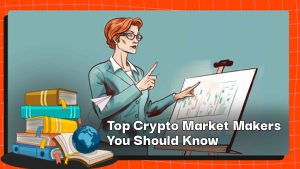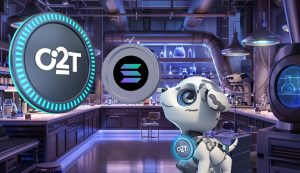Apply Maslow’s tower (shown in Part 1, Part 2, Part 3, Part 4) and the law of supply and demand to consider examples of 2-hottest GameFi projects in 2021.
![[Part 5] GameFi Research: Model Case Study 1 Model Case Study](http://news.coincu.com/wp-content/uploads/2022/07/image-1147-1024x512.png)
Axie Infinity
Axie Infinity is a turn-based game, a turn-based tactical battle game genre. This is one of the most popular and developed game genres in the traditional game. Not only that, but Axie also developed the Ronin chain, an infrastructure to meet great demand even in the most explosive time for Axie.
Axie Infinity meets all 3 upper floors of Maslow Tower:
- Level 3 (Social Demand): PvP Arena mode allows players to fight against each other. Guilds and groups are created so that players can join a certain community
- Level 4 (Need to be Respected): Axie players can collect and breed to create rare and unique Axies. When collecting enough will give players a sense of achievement.
- Level 5 (The need for self-actualization): Axie has a leaderboard system and regularly organizes tournaments. Good players have many opportunities to express themselves.
![[Part 5] GameFi Research: Model Case Study 2 gamefi research axie](http://file.coin98.com/images/gamefi-research-axie-91NVJmIH8a3aziM6.png)
Basically, the quality of Axie’s games is good. The main reason why the game is losing all players lies in the economic factor.
In the first design of Axie Infinity, players want to “play” to “earn”, they must first “pay” first. Specifically, players are required to buy a minimum of 3 Axies to play the game.
![[Part 5] GameFi Research: Model Case Study 3 AXS Model](http://news.coincu.com/wp-content/uploads/2022/07/image-1019-1024x447.png)
As shown below, the new supply of Axies is created by paying a fee in the form of SLP tokens and AXS tokens to breed 2 Axies together. During the period of strong expansion, the number of new players joining the network spiked, and the demand for Axie increased sharply in the secondary market. The demand is greater than the total supply leading to an increase in the price of Axie in the secondary market.
The sharp increase in Axie prices makes the ROI of breeding Axies and then selling them on the NFT marketplace increase and stimulates players to be more active in breeding Axies. Breeding Axies again requires AXS tokens and SLP tokens, which indirectly increases demand for AXS and SLP tokens in the secondary market and makes the minimum cost of creating a new Axie higher.
This is a positive feedback loop for Axie Infinity during the expansion phase. Roughly, the first phase (hyper-expansion phase) of the P2E 1.0 model is described by Phase 1 below: Supply, demand, and price all go up.
![[Part 5] GameFi Research: Model Case Study 4 gamefi research demand supply core](http://file.coin98.com/images/gamefi-research-demand-supply-corre-LJx33VpS3ChoL2zD.png)
In the next stage, the Axie supply is too much and the reward token (SLP) inflation is still increasing sharply while the number of buyers is not much. The problem with Axie Infinity’s model is that demand needs to grow exponentially because supply grows exponentially.
Even if user demand is constant, because the supply of Axie & SLP is increasing exponentially, the price will definitely decrease. Once prices continue to plummet and the market falls into saturation, the problems will worsen.
![[Part 5] GameFi Research: Model Case Study 5 gamefi research axie stat](http://file.coin98.com/images/gamefi-research-axie-stat-Pf7sNtNHshelKdVH.png)
In short, the previous design of Axie Infinity helped the project grow very quickly in the expansion phase. However, when moving to the contraction phase, the project will also be strongly negatively affected because supply exceeds demand.
The Sandbox
The Sandbox is a sandbox game, a creative game genre that allows players to freely explore and build as they want in a virtual environment. The Sandbox is one of the first on-chain games to “Fork” MineCraft, the most successful game in the past 10 years.
In addition to the GameFi trend, The Sandbox also enjoys the narrative of the Metaverse trend and has grown strongly in 2021.
![[Part 5] GameFi Research: Model Case Study 6 gamefi research sandbox](http://file.coin98.com/images/gamefi-research-sandbox-rGJeMEoWu5fSTEEI.png)
In terms of gameplay, Sandbox is quite similar to Minecraft. The highlight of The Sandbox is providing a toolkit so that users can create items themselves and release them as NFTs. The drawback is that the game is developed on Ethereum and users have to bear expensive transaction fees and long wait times.
Regarding the economic factor, the limitation of The SandBox lies in tokenomics. There is a large number of tokens belonging to the team and investors. All of them have increased in price many times and are waiting to be unlocked.
![[Part 5] GameFi Research: Model Case Study 7 SAND token release schedule](http://news.coincu.com/wp-content/uploads/2022/07/image-1031-1024x491.png)
From July 2020, SAND will be unlocked about every 6 months for components, each time the number of tokens circulating in the market will increase by 10% or more of the total supply.
Consider another key asset class of The Sandbox, Land. Players must have land to be able to create their own architecture. Land in The Sandbox has been bought by many big brands and developed the above architectures. Samsung, Adidas, Gucci and the latest Time cooperate with Sandbox to build a time square in the project.
Below is the price of the land at the time of sale.
![[Part 5] GameFi Research: Model Case Study 8 gamefi research sand land](http://file.coin98.com/images/gamefi-research-sand-land-xbgr62KN8aZnphim.png)
*Note the above price is for a 1×1 piece. If the player buys a 3×3 piece of land, the total number of pieces to buy will be 9 and the final price will be the price of 9* 1×1 piece. The same applies to the land 9×9, 12×12 and the largest piece is 24×24.
Considering only the current floor price of 1.54 E (with 1 E equal to 1,200 USD) for the 1×1 piece, the price has been x38.5 times since the time of sale.
The Sandbox is a “Fork” of Minecraft, what makes Minecraft stand out and maintain is in allowing players to create worlds according to their own imagination. At Sandbox, buying land meets that core element. This creates demand from the players and increases the value of the land.
Other Games
Illuvium, Star Atlas, My Neighbor Alice and many other games have the common feature that they have not released games but have sold tokens. It all just stops at the level of gameplay teaser or being in the beta stage.
This not only makes Maslow’s tower unsatisfied (we can’t be sure if a game is attractive if we haven’t played it directly) but also makes the demand close to 0. The amount of demand at this time is mostly speculation or coming. from use cases will increase the supply later that is staking.
With the lack of a suitable economic model to be applied. Projects that don’t have a game that sells tokens are no different from buying their own lanyard.
Summary
(1) The economic design of current games has many limitations.
(2) With a game of good quality and attracting users, assets associated with the core value of the game will tend to develop better than other types of assets.
Verdict
If you have any questions, comments, suggestions, or ideas about the project, please email ventures@coincu.com.
DISCLAIMER: The Information on this website is provided as general market commentary and does not constitute investment advice. We encourage you to do your research before investing.
Join CoinCu Telegram to keep track of news: https://t.me/coincunews
Follow CoinCu Youtube Channel | Follow CoinCu Facebook page
Marcus
Coincu Venture




















